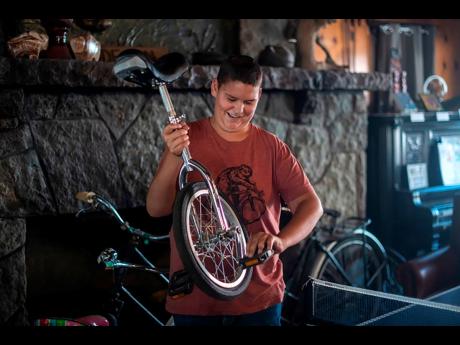Cancer curable for 80 per cent of children with early care
CANCER IS uncommon in children. Most cancers develop in adults, and it is most common in older adults. About one out of every three adults will develop cancer during their lifetime, while about one in 285 children will develop cancer before the age of 20.
At the same time, there is a lot of research going on to discover new treatments for childhood cancers. This research has greatly improved the overall survival rate for children with cancer, which is now more than 80 per cent.
Cancer in children can occur anywhere in the body, including the blood and lymph node systems, brain and spinal cord (central nervous system, or CNS), kidneys, and other organs and tissues. Most of the time, there is no known cause for childhood cancers. Childhood cancers may behave very differently from adult cancers, even when they start in the same part of the body.
Cancer begins when healthy cells change and grow out of control. In most types of cancer, these cells form a mass called a tumour. A tumour can be cancerous or benign. A cancerous tumour is malignant, meaning it can grow and spread to other parts of the body. A benign tumour means the tumour can grow but will not spread to distant parts of the body.
In leukaemia, a cancer of the blood that starts in the bone marrow, these abnormal cells very rarely form a solid tumour. Instead, these cells crowd out other types of cells in the bone marrow. This prevents the production of normal red blood cells, cells that carry oxygen to tissues, white blood cells, cells that fight infection, and platelets – the part of the blood needed for clotting.
Childhood cancer, also called paediatric cancer, is a general term used to describe a range of cancer types found in children.
There is an increasing amount of research regarding cancer in children diagnosed after the age of 14. Since these children are starting to enter young adulthood, they may have unique medical, social, and emotional needs that are different from younger children with cancer. They are part of a group often called adolescents and young adults.
Most often, teenagers and young adults with cancer should be treated at a paediatric oncology centre. Ideally, they should be treated at a centre where both medical oncologists, who are doctors who treat cancer in adults, and paediatric oncologists, who are doctors who treat cancer in children, work together to plan treatment.
This will ensure that they receive the newest treatments and are cared for by a team of doctors familiar with these diseases. This is especially important for teenagers who have lymphoma, leukaemia, or a bone tumour. Treatment by specialists familiar with these diseases has been shown to improve survival.
Within the AYA group, there are also patients who have types of cancer more commonly found in adults, such as melanoma, testicular cancer, or ovarian cancer. Teenagers with these cancers may receive treatments that are similar to adults, but they also need age-appropriate support for their social and emotional needs.
A correct diagnosis is essential to prescribe appropriate therapy for the type and extent of the disease. Standard therapies include chemotherapy, surgery and/or radiotherapy. Children also need special attention to their continued physical and cognitive growth and nutritional status, which requires a dedicated, multidisciplinary team. Access to effective diagnosis, essential medicines, pathology, blood products, radiation therapy, technology and psychosocial and supportive care are variable and inequitable around the world.
However, cure is possible for more than 80 per cent of children with cancer when childhood cancer services are accessible. Children who complete treatment require ongoing care to monitor for cancer recurrence and to manage any possible long-term impact of treatment.
KEY FACTS:
· Each year, an estimated 400, 000 children and adolescents between 0-19 years old develop cancer.
· The most common types of childhood cancers include leukaemias, brain cancers, lymphomas and solid tumours, such as neuroblastoma and Wilms tumours.
· In high-income countries, where comprehensive services are generally accessible, more than 80 per cent of children with cancer are cured. In low- and middle-income countries (LMICs), less than 30 per cent are cured.
· Childhood cancer cannot generally be prevented or identified through screening.
· Most childhood cancers can be cured with generic medicines and other forms of treatment, including surgery and radiotherapy. Treatment of childhood cancer can be cost-effective in all income settings.
· Avoidable deaths from childhood cancers in LMICs result from lack of diagnosis, misdiagnosis or delayed diagnosis, obstacles to accessing care, abandonment of treatment, death from toxicity, and relapse.
· Only 29 per cent of low-income countries report that cancer medicines are generally available to their populations, compared to 96 per cent of high-income countries.
· Childhood cancer data systems are needed to drive continuous improvements in the quality of care, and to inform policy decisions.
Source: World Health Organization


